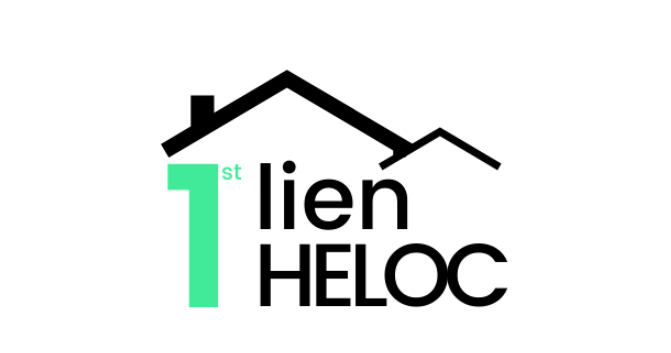
Cash flow is a crucial financial metric that affects both individuals and businesses.
Whether you’re managing personal finances, running a small business, or investing, understanding cash flow is essential for maintaining financial health.
This guide will walk you through what cash flow is, its types, why it’s so important, and strategies for managing it effectively.
1. Understanding Cash Flow

Cash flow refers to the movement of money into and out of a business, account, or financial entity.
Simply put, it tracks how much cash (actual money) is being generated versus how much is being spent.
Cash flow is often confused with profit, but they are distinct. Profit is an accounting concept that considers all expenses, while cash flow only focuses on actual cash transactions.
- Positive Cash Flow: When more money is coming in than going out, your cash flow is positive. This indicates that a business or individual can cover their expenses and still have money left over to save, invest, or spend.
- Negative Cash Flow: When more money is leaving than coming in, it results in negative cash flow. This can signal that a business or individual may struggle to meet financial obligations unless the situation improves.
2. Types of Cash Flow

Cash flow is categorized into three main types, each of which plays a distinct role in managing finances:
a. Operating Cash Flow
Operating cash flow represents the money generated from core business activities. For businesses, this includes revenue from sales, less the operating expenses required to run the company.
For individuals, it could include salaries, wages, or any regular income minus the necessary day-to-day expenses.
- Why It Matters: Operating cash flow determines whether a business or individual can cover their regular financial obligations.
A consistently positive operating cash flow indicates a strong financial foundation.
b. Investing Cash Flow
Investing cash flow relates to the buying and selling of assets, whether they are personal investments, real estate, or company acquisitions. For businesses, this could involve purchasing equipment or selling off an asset, while for individuals, it might mean buying a house or selling stocks.
- Why It Matters: Investing cash flow highlights how much money is being used or generated from investments.
A negative investing cash flow might indicate a company is growing by acquiring new assets, but it also means cash is being tied up, which can affect liquidity.
c. Financing Cash Flow
Financing cash flow tracks cash flow related to loans, dividends, or equity transactions. For a business, it includes cash flows from borrowing money or issuing stock. For individuals, it might include obtaining a mortgage or repaying loans.
- Why It Matters: Financing cash flow shows how a company or individual is funding operations or growth, whether through debt or equity.
Positive financing cash flow might indicate a company is raising capital, while negative cash flow may mean the entity is paying off loans or returning capital to shareholders.
3. Why Cash Flow is Important

Cash flow is more than just a financial term—it is a lifeline for businesses and a measure of financial stability for individuals. Here’s why it matters:
a. Ensures Liquidity
Positive cash flow is essential for maintaining liquidity, meaning you have enough cash on hand to cover immediate obligations. Whether you’re a business paying vendors or an individual covering your mortgage, liquidity ensures you don’t need to rely on loans or credit to meet your obligations【Source: Investopedia】.
b. Supports Growth and Expansion
For businesses, consistent cash flow enables investment in growth strategies such as hiring more staff, expanding operations, or developing new products. Similarly, individuals with positive cash flow can save, invest, and build wealth over time【Source: Forbes】.
c. Financial Stability
Monitoring cash flow ensures that you or your business are financially stable enough to handle unexpected expenses or economic downturns. A healthy cash flow allows businesses to continue operating even during slower periods and helps individuals avoid debt accumulation【Source: NerdWallet】.
d. Investor and Lender Confidence
For businesses, strong cash flow demonstrates to investors and lenders that the company is financially healthy. Investors are more likely to support businesses that show consistent cash flow, as it reduces the risk of default【Source: U.S. Small Business Administration】.
4. How to Improve Cash Flow

Improving your cash flow ensures you can maintain financial stability and expand your options for growth. Here are several actionable strategies:
a. Increase Revenues
Boosting revenue should be a primary focus, whether you’re a business or an individual. Businesses can increase sales through marketing, new products, or expanding services, while individuals may consider side hustles or seeking a higher-paying job.
b. Reduce Expenses
Cutting unnecessary costs is a straightforward way to improve cash flow. For businesses, this may mean renegotiating contracts, switching suppliers, or optimizing operations.
For individuals, reducing discretionary spending, such as dining out or luxury purchases, can free up significant funds【Source: The Balance】.
c. Better Cash Flow Management
Creating a budget and forecasting future cash flows helps businesses and individuals plan ahead.
A clear view of expected income and expenses allows you to manage cash flow more effectively, ensuring you have enough liquidity to cover upcoming obligations.
d. Leverage Financing Options
For businesses, leveraging short-term loans or lines of credit can help cover temporary cash shortfalls.
For individuals, refinancing loans or using tools like a First Lien HELOC can provide more flexible access to cash based on your home equity.
5. Common Cash Flow Mistakes to Avoid

To maintain strong cash flow, it’s important to avoid these common pitfalls:
a. Focusing Solely on Profit
Businesses often focus on profit over cash flow, but high profits don’t always guarantee positive cash flow. Profits might be tied up in inventory or accounts receivable, leaving you without enough cash to meet current expenses.
b. Over-leveraging Debt
Taking on too much debt without a proper cash flow strategy can lead to financial strain. It’s important to maintain a balance between debt and cash flow to ensure that loan repayments don’t become burdensome.
c. Ignoring Seasonal Fluctuations
Certain businesses and industries experience seasonal fluctuations in cash flow. Not preparing for these variations can lead to cash flow shortfalls during slower months.
Individuals should also plan for seasonal expenses such as holidays or vacation costs【Source: U.S. Chamber of Commerce】.
6. Tools and Resources for Cash Flow Management

Effectively managing cash flow requires the right tools and knowledge. Here are some resources:
- Cash Flow Statements: Regularly reviewing your cash flow statement helps track money movement and identify trends.
- Budgeting Tools: Use apps like YNAB or QuickBooks to track spending and income in real-time.
- Professional Advice: Consider working with an accountant or financial planner to help manage cash flow more effectively.
Make Cash Flow a Priority
Cash flow is the lifeblood of any financial plan.
Whether you’re an individual trying to save or a business looking to grow, understanding and managing cash flow effectively will set you up for long-term financial success.

Take control of your cash flow today! If you’re a homeowner, you can leverage your home equity to improve your financial flexibility.
Use the First Lien HELOC Calculator to explore how this financing tool can help you manage your cash flow and meet your financial goals.

